The Best Blue Flowers for Spring
Years ago, Martha Stewart Living Magazine featured an article about a bulb planting project at Martha’s home in Bedford, NY. The goal was to create a swath of blue spring flowers that would bloom along her driveway, under an established linden allée.
The planting scheme featured six kinds of spring bulbs in various shades of blue. Several different types of bulbs were included to provide variations in color and texture, as well as to extend the bloom time from early through mid-spring. Here is an image from that article in Martha Stewart Living Magazine, September 2011.
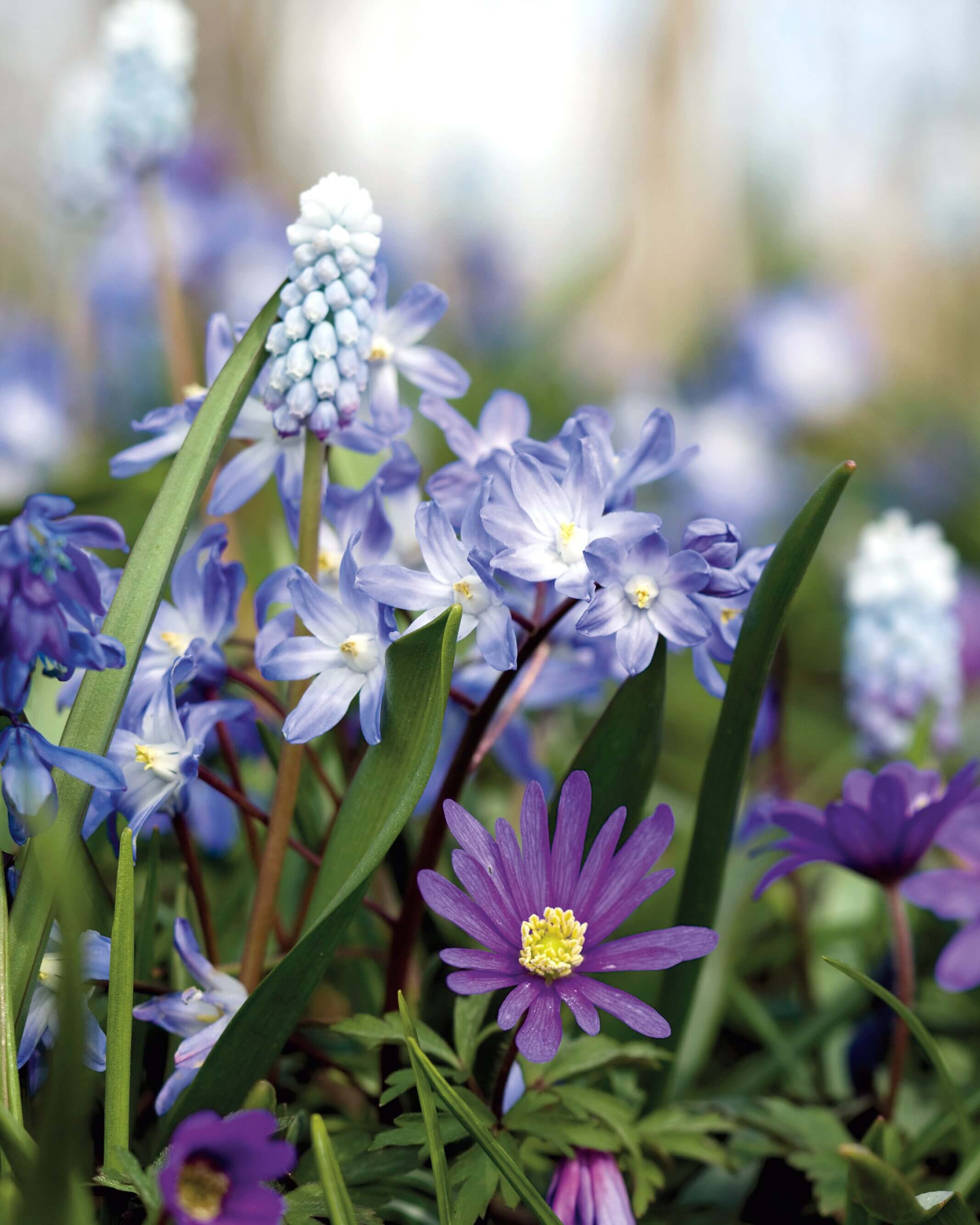
Inspired by that story, we decided to give this planting scheme a try -- although on a much more modest scale. We planted our bulbs into an existing bed that runs along the edge of a woodland. The area faces north and is in full shade during the summer months. It was already home to some low-growing perennials, including astilbes, ferns, and hostas. In the spring, before those perennials emerge, there are snowdrops, two types of white daffodils and white trilliums.
Most of the bulbs in this carpet of blue planting scheme are early bloomers that prefer cold winters. If you garden in zone 8 or warmer, we recommend experimenting with a small number of bulbs before going all out on a large planting. Read on to learn about the bulbs we included in our carpet of blue, and to get a look at the beautiful results.
Best Bulbs for a Carpet of Blue Spring Flowers

Anemone blanda. Also known as Grecian windflower, these daisy-like blossoms have golden yellow centers and lacy foliage. We used the variety ‘Blue Shades’ (shown above), though Anemone blanda is also available in white and pink.

Chionodoxa. Commonly known as glory-of-the-snow. The star-like flowers have six petals and bloom in clusters atop slender stems. They are also available in white and pink. We planted ‘Blue Giant,’ which has sky blue petals, crisp white centers, and pale-yellow stamens.
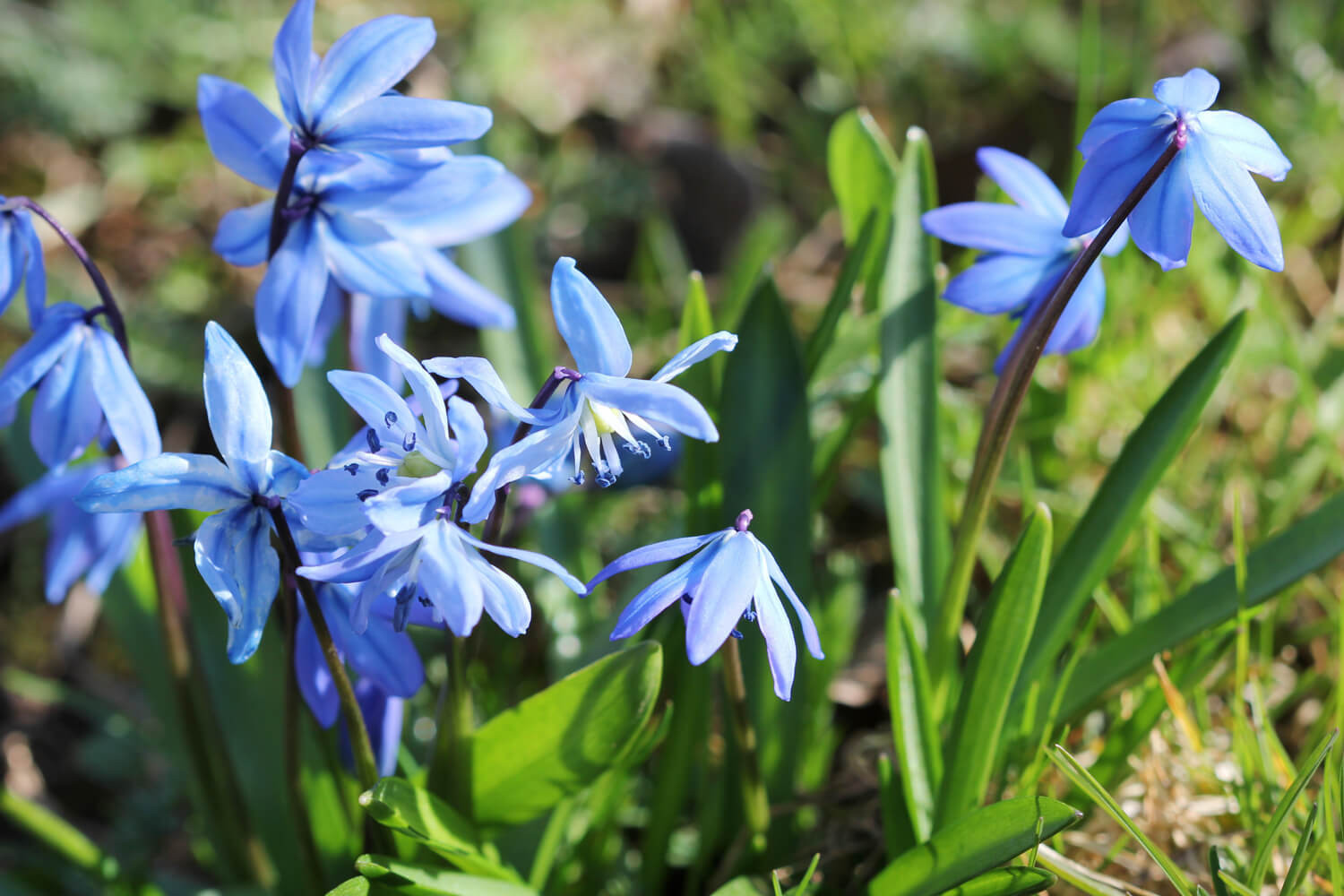
Scilla siberica. Commonly known as Siberian squill. These little bulbs have dark stems, topped with a cluster of cobalt blue parasols. Scilla siberica grows just 4” tall and usually spreads over time.

Muscari latifolium (left) and Muscari 'Blue Magic' (right).
Muscari. The original planting at Martha’s house included two types of muscari. We also planted two: Muscari ‘Blue Magic’ and Muscari latifolium. The flowers of Blue Magic shade from dark to light and are a stunning cornflower blue. Muscari latifolium is about twice as tall, with two-tone, blue-black flowers. The flowers open a bit later and so last about a week longer.
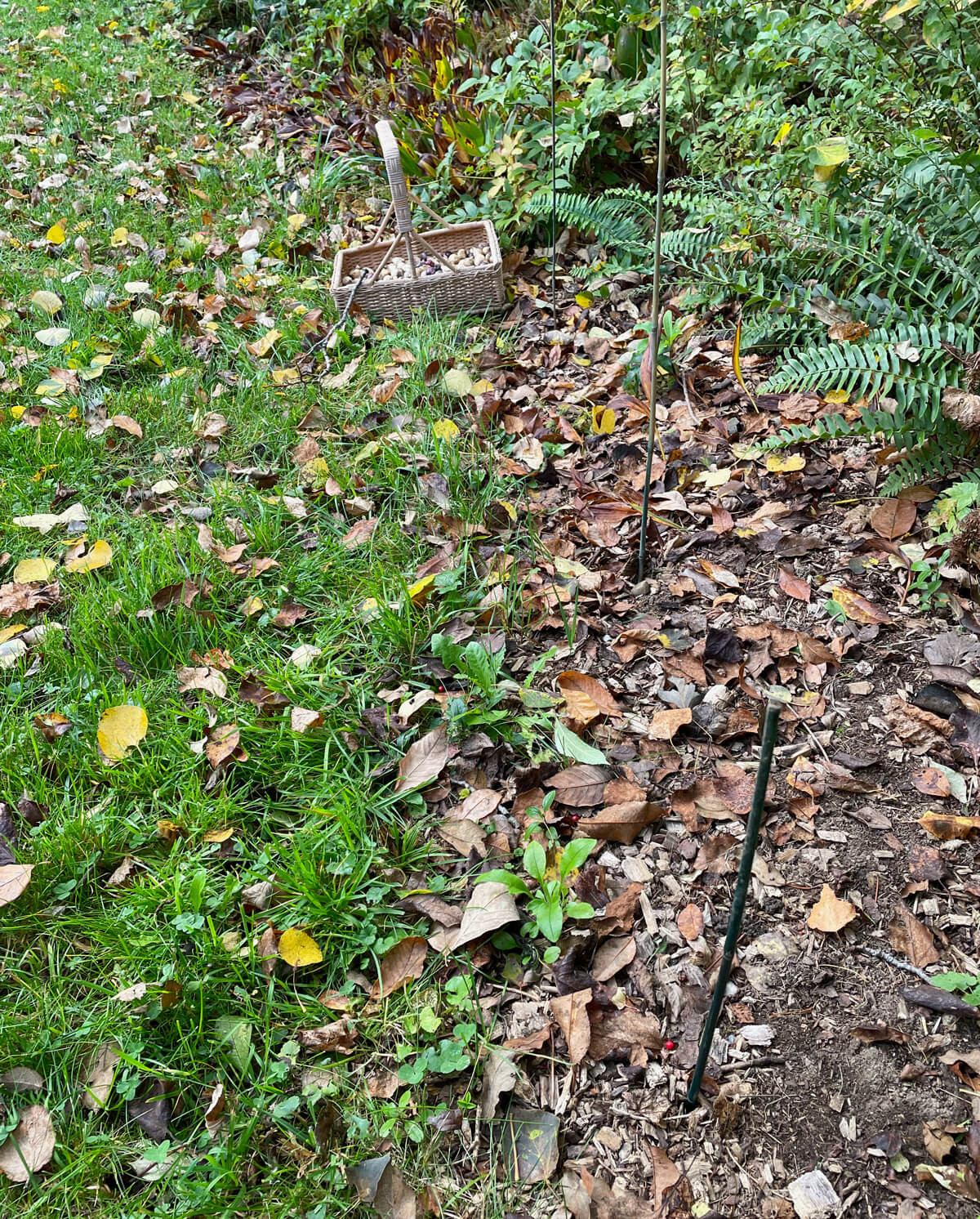
The planting area is at the edge of the lawn, where it meets the woods. We began by using bamboo canes to mark out some 12" x 18" planting pockets.
Preparing the Soil for Planting
Bulbs should always be planted in well-drained soil that’s never soggy. Loose and relatively crumbly soil makes it easy for the bulbs to establish roots, which needs to happen quickly — before the soil freezes. If the soil in the planting area is heavy or compacted, you can improve it by adding compost. During the summer months, when the bulbs are dormant, they need very little water. When they are actively growing (spring and fall) they should have relatively consistent moisture.
If you plant your bulbs into a new garden bed where there are no other plants, loosen the soil 6-12” deep and remove any weeds. Dig in some compost or leaf mold if you have it. When adding bulbs to an existing garden bed, it's still important to loosen the soil in each of the bulb-planting pockets.

To get a consistent look, we mixed all the bulbs together and then divided them into 11 small plastic containers - one for each planting pocket.
Planting the Bulbs
For the project at Martha Stewart’s house, the bulbs were poured into wheelbarrows and mixed before planting. Bulbs were then scattered over the beds and planted where they landed. This technique creates a pointillist effect with a relatively consistent look across the entire planting area. Another option would be to keep each type of bulb separate and plant them side by side in small groups to achieve a patchwork effect.
Since it can be a little challenging to make a large planting look random, we decided to mix all the bulbs together.
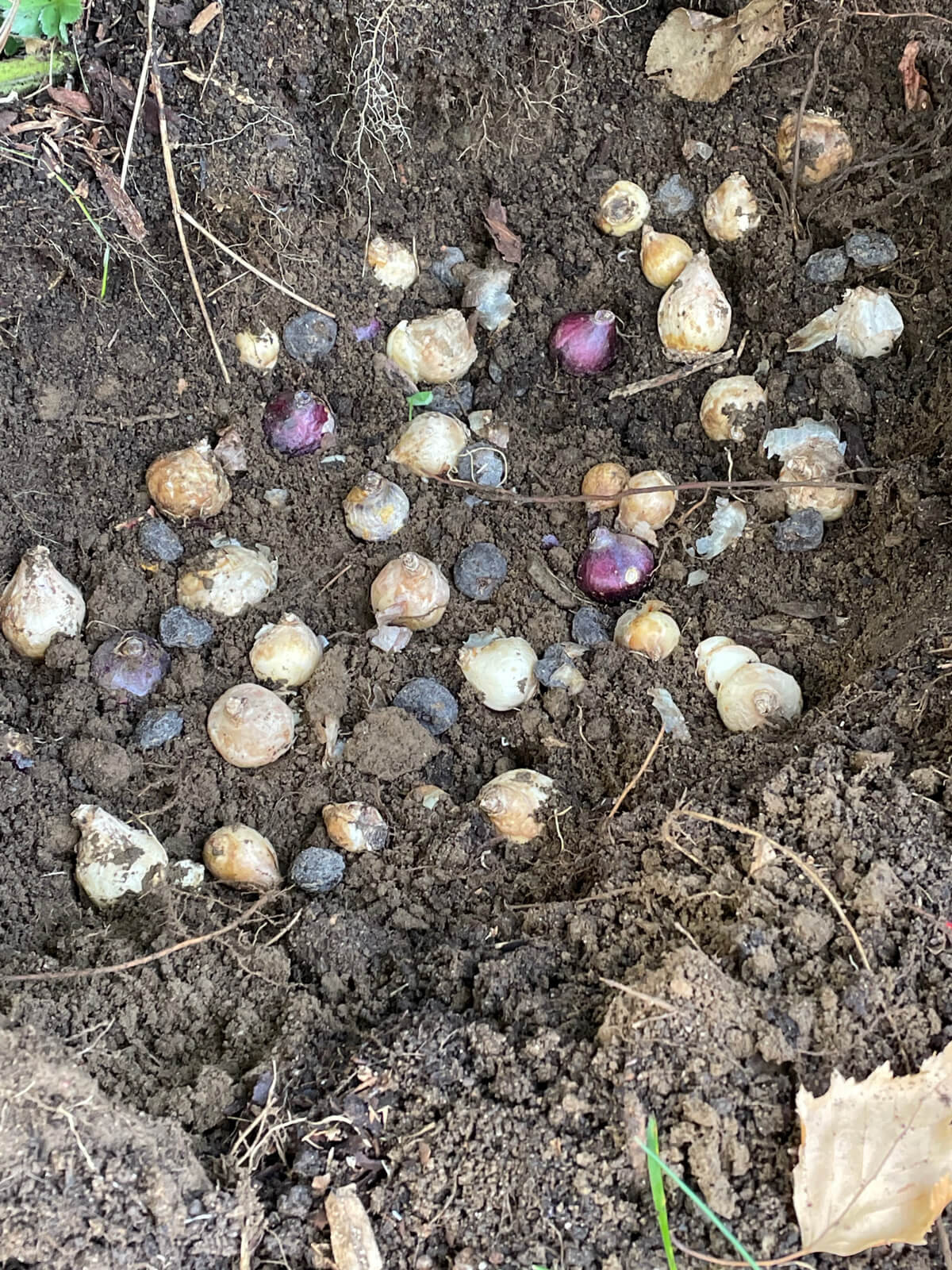
Here's how the bulbs looked in the planting pockets. You could certainly space them further apart to cover a larger area.
When planting big bulbs, such as tulips, daffodils, or hyacinths, we recommend loosening the soil in the entire planting area with a garden fork. But with small bulbs, it's usually easier to dig out a planting pocket, scatter the bulbs and then replace the soil. When scattering small bulbs, don't worry if some of them wind up on their side or even upside down. Once they sprout, they will head for the light and bloom properly.
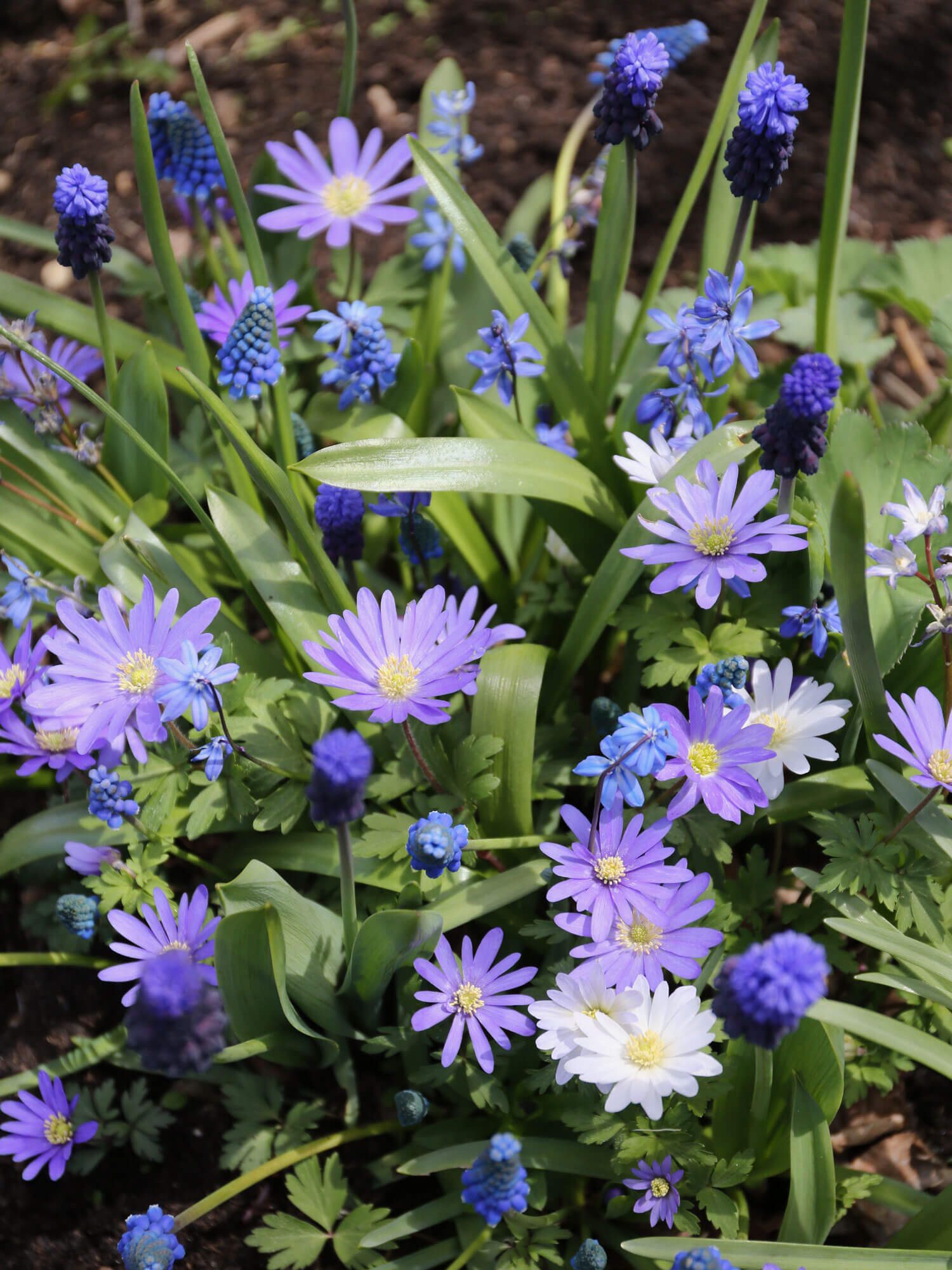
Caring for Your Blue Spring Flowers
All of these blue spring flowers are perennial, so if they are happy where you plant them, they will bloom again each spring. An annual top-dressing of compost will provide all the nutrients needed.
After the bulbs finish blooming, allow the foliage to remain in place until it dies back naturally. This allows the bulbs to replenish their reserves so they can multiply and bloom again the next spring. Since the foliage of these bulbs is narrow and grass-like, it doesn’t have a big presence and fades away pretty quickly.

To visually connect the planting pockets and extend the show of color, we sprinkled the seeds of blue forget-me-nots (Myosotis sylvatica) over the soil surface. We find this plant self-sows in a good way and it's easy to remove extra plants. In some midwestern states Myosotis is considered an invasive, so check that out before you plant.
There are many low-growing perennials that would be good companions for these little blue bulbs. Consider heuchera, hellebores, ferns, astilbes, corydalis, hosta, brunnera and pulmonaria. You could also complement them with a ground cover such as vinca or sweet woodruff.

Muscari latifolium adds height and drama.
This mix of blue spring bulbs would be lovely planted beneath deciduous trees or in and around a shrub border. It would also look pretty lining a walkway, edging a stream, or decorating the entrance to a woodland. Please let us know if you give it a try!
Learn more about growing spring-blooming bulbs in these articles on our website: How to Plan a Spring Bulb Garden, 5 Ways to Plant Fall Bulbs (video), and Bloom Time Planning Guide for Spring and Summer Bulbs. You can read the Martha Stewart Living Magazine article HERE.
